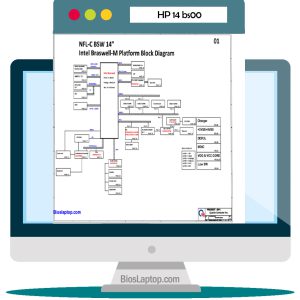A schematic is a visual representation of something that simplifies complex information using symbols. A schematic diagram is a specific type of schematic that illustrates the components of a process, device, or object with standardized symbols and lines. Schematic diagrams only show the essential components of a system, with some details exaggerated or added to aid comprehension.
The purpose of a schematic diagram is to convey information in a clear and concise manner, without including unnecessary details that could confuse the reader. For instance, when depicting an electrical circuit, a schematic diagram shows how wires and components are connected, rather than displaying photographs of the circuit.
In summary, schematic diagrams are a useful tool for presenting information in a simplified and standardized format, highlighting the key components of a system, and aiding comprehension.
Key Takeaways: Schematic Diagram
- A schematic diagram is a visual representation of the components of a process, device, or object using standardized symbols and lines in an abstract manner. While schematic diagrams are most commonly used in the field of electrical circuits, they can be applied to various industries.
- Schematic diagrams are widely used in mechanical engineering, architecture, and biology, among other fields. In mechanical engineering, they are used to illustrate the design and functioning of machines and their components. In architecture, schematic diagrams represent the layout and design of buildings and their systems, such as heating, ventilation, and air conditioning (HVAC) and plumbing. In biology, schematic diagrams are used to show molecular and cellular processes.Therefore, schematic diagrams are a versatile tool that simplifies complex information using standardized symbols and lines, and can be used in a wide range of industries and fields.
What Is a Schematic Diagram?
Schematic diagrams vary in their level of abstraction. While most diagrams consist of abstract symbols and lines, some diagrams may include semi-schematic elements or even words. This is particularly helpful when describing processes that contain multiple elements that have not been standardized.
In essence, a schematic diagram is a simplified illustration that employs symbols and lines to communicate important information. For instance, when taking the subway, a map displaying all the buildings and roads on the way would be too complex to understand. A schematic subway map, on the other hand, would show differently colored lines representing various subway routes, with dots indicating the stops along each line.
To summarize, schematic diagrams are a valuable tool for simplifying complex information by using symbols and lines to highlight key components. Depending on the purpose of the diagram, the level of detail and abstraction may vary.

Although schematic diagrams are commonly associated with electronics, you may have encountered various examples of such diagrams in your work or studies, even if you have never wired a circuit. For instance, the subway example above illustrates this point. Below are some additional examples of the many schematic diagrams that you may come across.
Examples of Schematic Diagrams
Schematic Diagrams in Electronics

Schematic diagrams are typically associated with electrical circuits, which are also referred to as wiring diagrams or circuit diagrams. These diagrams illustrate the connections between the different components of a circuit. The symbols used to represent the various components, such as resistors, lamps, and switches, are standardized and called electrical schematic symbols. Connecting wires are depicted as lines in these diagrams.
In the field of electronics, having a schematic diagram readily available can be useful for designing an entire circuit before constructing it, or for troubleshooting a malfunctioning electronic device.
Schematic diagrams can also serve to explain the general functioning of an electronic device without delving into the specific hardware or software used. For example, to illustrate how a computer displays the text typed by a user, a schematic diagram may depict the flow of information from the keys pressed by the user to a word processing program, and ultimately to the computer screen.
Schematic Diagrams in Manufacturing

Schematic diagrams can also be utilized to represent machines. For instance, in a textbook, a car engine can be illustrated as a set of shapes that display the positioning of the different components in relation to one another. Furthermore, an engineer may create a schematic drawing while designing a machine to comprehensively comprehend how the components operate in conjunction with one another and to implement any required alterations before constructing the actual system.
Schematic Diagrams in Chemistry
In the realm of chemistry, numerous chemical products are obtained by carrying out a sequence of various reactions at different stages of the process. A schematic diagram in chemistry can aid in comprehending all the reactions that were executed to produce a final product, without demonstrating the actual products themselves. This can be represented, for instance, as a series of interconnected boxes with arrows and words that depict the different elements and conditions utilized throughout the process.
Similarly to machines, a schematic diagram may also be utilized to illustrate the equipment utilized for conducting the reactions, particularly if it is not typically employed for such purposes or if it has been adapted from an already-known instrument.
Schematic Diagrams in Business

Schematic diagrams can be beneficial in presenting the fundamental components of a complex business model and elucidating how they interrelate. For instance, a marketing plan may encompass numerous components, such as strategy, objectives, and an action plan. A schematic diagram would then be employed to methodically arrange all of these elements, including those within each category, in a manner that conveys the principal concepts in a clear and succinct manner.











